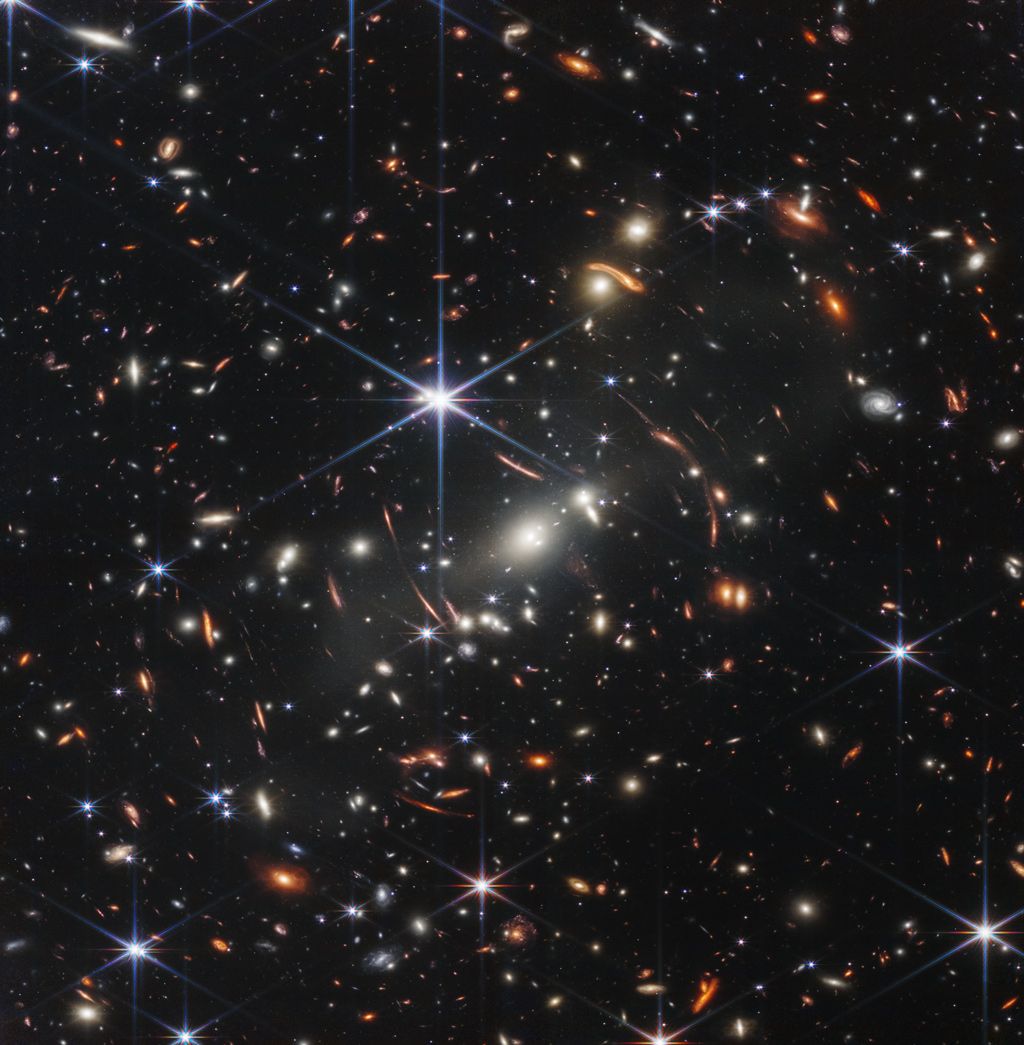
NASA released its first processed image from JWST, a gorgeous infrared portrait of galaxy cluster SMACS J0723.3-7327 located an incredible 5.6 billion light-years away. Even with the light-gathering power of JWST, it took weeks of observations at different wavelengths of light, equivalent to staring at one spot of the sky for a total of 12.5 hours, to construct this image. The result is both a work of art and cosmic archeology, as it captures a snapshot of our universe, back through time to the birth of the first stars and galaxies.
At first, as we look at the image, our eyes are drawn to bright white spikes of starlight. These are foreground stars, part of our own Milky Way galaxy that happen to be in the line of sight. Behind them, and every smudge of light in the frame, is an entire galaxy, each containing hundreds of billions of stars. Some are familiar shapes, spiral galaxies like our own Milky Way. Others, like the bright white smudge at the center of the image, are elliptical galaxies, giant balls of up to a trillion stars. In general, the smaller the galaxy appears, the further away it is, and the longer its light has had to travel to reach us. For some of the tiniest galaxies in the image, their light has been traveling for thirteen billion years through space before hitting JWST's mirror and being redirected onto the telescope's detector.
But perhaps the most mesmerizing objects are the long streaks and arcs that encircle the central cluster of galaxies. These galactic tadpoles are some of the most distant galaxies ever seen, way beyond the SMACS J0723 galaxies, and their images are distorted and magnified by a process called gravitational lensing.
The gravity of the trillions of stars within SMACS J0723 literally bends the geometry of space, making it a cosmic magnifying glass revealing details and too faint for even JWST to discern. The more mass, the more the distortion and lensing take place, allowing astronomers to measure the galaxy cluster's mass, including the location and amount of invisible dark matter.
The amount of sky this image portrays can be covered by a sand grain held at arm's length. The history of the universe in a grain of sand, with the sweeping cosmic beach yet to be discovered.





